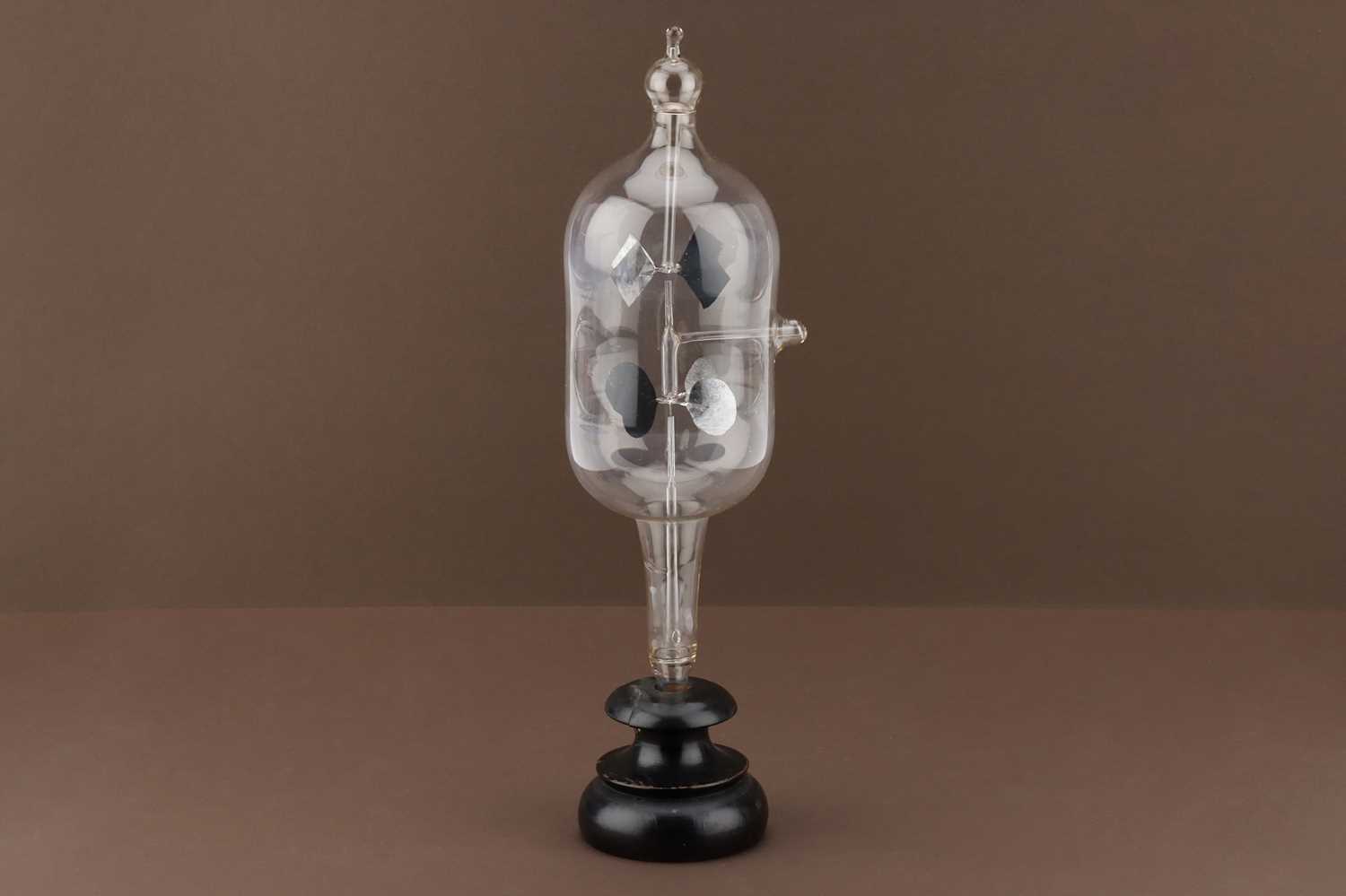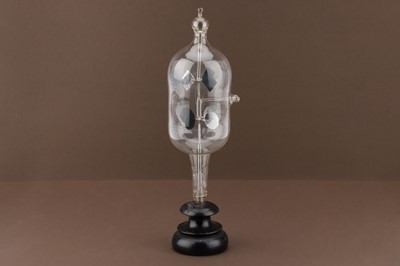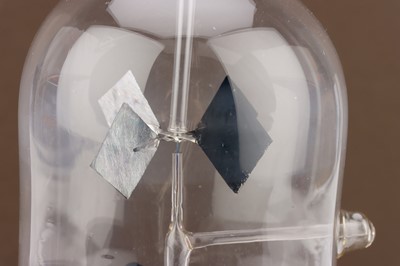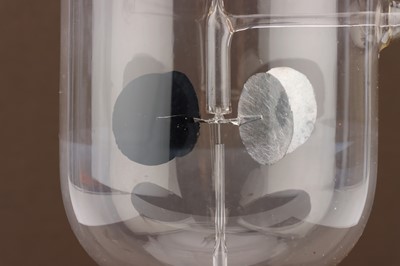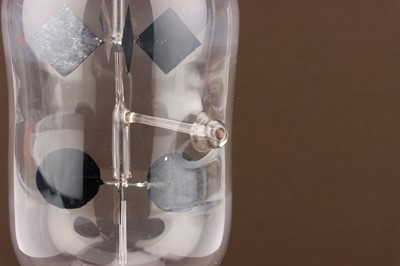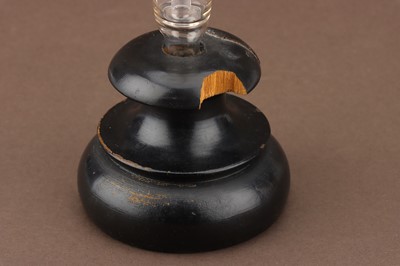24th May, 2023 12:00
Fine Instruments of Science, Medicine and Books
A Double Vane Crooke's Radiometer
German, c.1880, hand blown glass vessel containing 2 sets of mica vanes constructed to contra-rotate when exposed to sunlight, on a turned wooden base, height 28cm
The Crookes radiometer, also known as a light mill, is a fascinating scientific device that consists of a glass bulb with a partial vacuum inside, containing a set of vanes that are mounted on a spindle. When exposed to light, the vanes spin rapidly, seemingly in response to the radiation pressure of the light. The device was first discovered by Sir William Crookes, a British physicist and chemist, in 1873.
Crookes was conducting experiments on the behavior of gases under low pressure when he noticed a strange effect. He observed that when a partially evacuated glass bulb containing a paddle wheel was exposed to light, the wheel began to spin. This observation puzzled Crookes and he was eager to understand the mechanism behind it. He soon realized that the spinning of the paddle wheel was due to the radiation pressure of the light.
The radiation pressure of light is a force that arises when photons, the particles that make up light, collide with an object. When the photons collide with the vanes of the Crookes radiometer, they exert a tiny amount of force on them, causing them to spin. The force exerted by the photons is proportional to the intensity of the light and the surface area of the vanes.
Crookes went on to study the effect in more detail, constructing various versions of the device and exploring its properties. He discovered that the speed of the vanes increased with the intensity of the light, and that the direction of rotation depended on the color of the light. He also found that the vanes spun faster in a vacuum than in air, as the presence of air molecules can interfere with the motion of the vanes.
Condition: works well in strong daylight
Sold for £625
Result plus buyers premium
German, c.1880, hand blown glass vessel containing 2 sets of mica vanes constructed to contra-rotate when exposed to sunlight, on a turned wooden base, height 28cm
The Crookes radiometer, also known as a light mill, is a fascinating scientific device that consists of a glass bulb with a partial vacuum inside, containing a set of vanes that are mounted on a spindle. When exposed to light, the vanes spin rapidly, seemingly in response to the radiation pressure of the light. The device was first discovered by Sir William Crookes, a British physicist and chemist, in 1873.
Crookes was conducting experiments on the behavior of gases under low pressure when he noticed a strange effect. He observed that when a partially evacuated glass bulb containing a paddle wheel was exposed to light, the wheel began to spin. This observation puzzled Crookes and he was eager to understand the mechanism behind it. He soon realized that the spinning of the paddle wheel was due to the radiation pressure of the light.
The radiation pressure of light is a force that arises when photons, the particles that make up light, collide with an object. When the photons collide with the vanes of the Crookes radiometer, they exert a tiny amount of force on them, causing them to spin. The force exerted by the photons is proportional to the intensity of the light and the surface area of the vanes.
Crookes went on to study the effect in more detail, constructing various versions of the device and exploring its properties. He discovered that the speed of the vanes increased with the intensity of the light, and that the direction of rotation depended on the color of the light. He also found that the vanes spun faster in a vacuum than in air, as the presence of air molecules can interfere with the motion of the vanes.
Condition: works well in strong daylight
